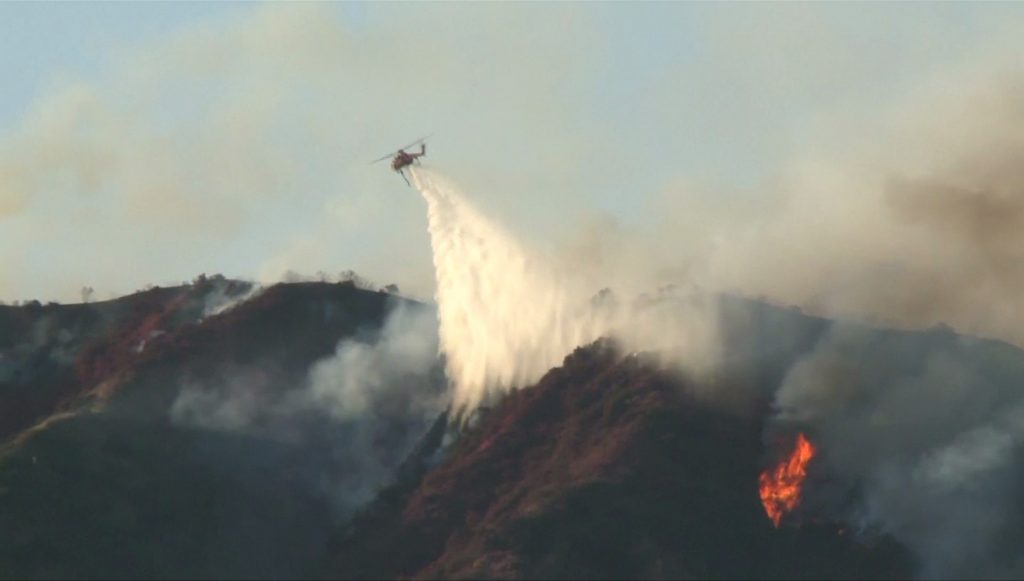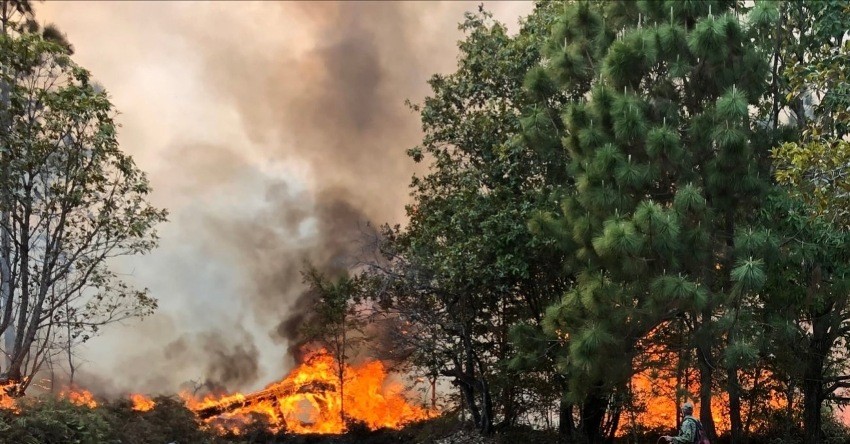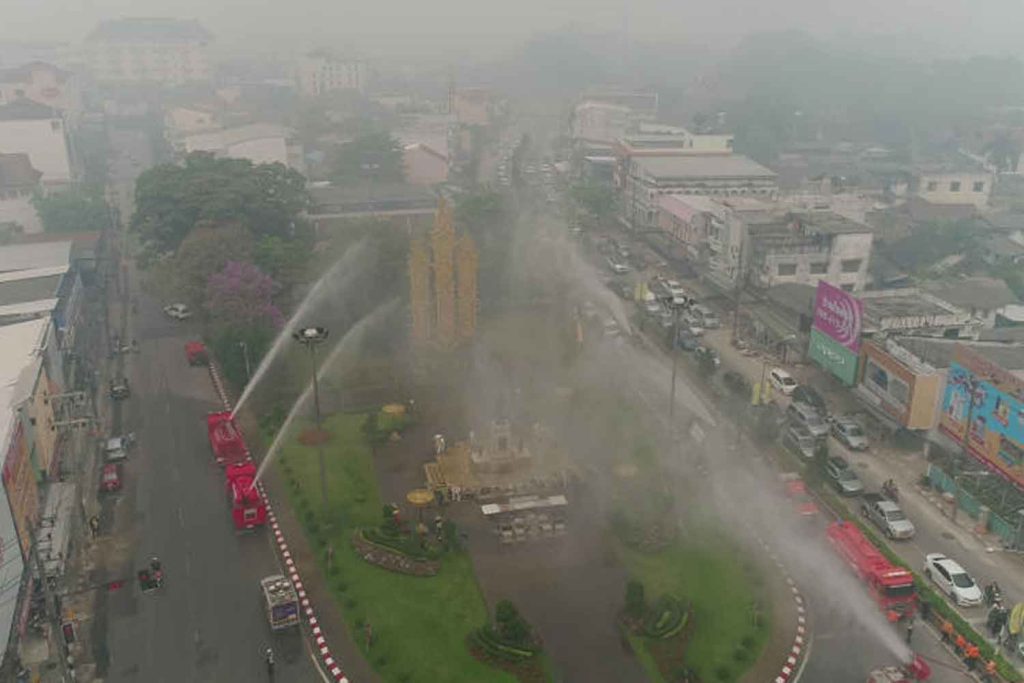In support of firefighters on the ground, a Royal Thai Air Force aircraft and helicopters from the Department of Public Disaster Prevention and Mitigation flew a fire-fighting mission Saturday to extinguish wildfires on Doi Jorakhae and in adjacent areas in Chiang Rai’s Mae Suai district.
The forest fire prevention and mitigation centre has mobilized hundreds of firefighters to combat forest fires on Doi Jorakhae, a steep mountain that borders the Chiang Rai districts of Mueang and Mae Chan.
Firefighters constructed fire breaks in inaccessible locations to prevent wildfires from spreading to a monastery in Ban Bo Thong, Tha Sut sub-districts in Chiang Rai.
Yesterday, the Geo-Informatics Space Technology Development Agency (GISTDA) recorded 52 hotspots in Chiang Rai, with 15 in Mae Sui, 13 in Mueang, nine in Wiang Pa Pao, and three each in Mae Chan and Pan.
Officials have stated that PM2.5 pollution in Chiang Rai will worsen before improving, and that Songkran revelers do so at their own risk.
Wildfires in Chiang Rai
Chiang Rai is a province in northern Thailand known for its natural beauty and lush forests. However, like many other regions around the world, Chiang Rai has also experienced wildfires.
Wildfires in Chiang Rai, as in other parts of Thailand and Southeast Asia, are often caused by a combination of natural and human factors. Dry weather conditions, high temperatures, low humidity, and accumulation of dry vegetation can all contribute to the risk of wildfires. Human activities such as slash-and-burn agriculture, illegal logging, and accidental fires can also spark wildfires in the region.
Wildfires in Chiang Rai can have detrimental impacts on the environment, including loss of biodiversity, destruction of habitats, and air pollution from smoke and ash. They can also pose risks to human health and safety, as well as damage property and infrastructure.
To mitigate and prevent wildfires in Chiang Rai and other regions, local authorities and communities undertake various measures, including firebreaks, controlled burns, and public awareness campaigns on fire prevention and forest conservation. Additionally, the Thai government enforces laws and regulations to curb illegal activities that may contribute to wildfires, such as unauthorized land clearing and logging.
Efforts are also made to promote sustainable land management practices, such as agroforestry and community-based forest management, to reduce the risk of wildfires and promote sustainable use of natural resources in Chiang Rai and other areas of Thailand.
It’s important to note that wildfire occurrences can vary from year to year depending on weather patterns, climate conditions, and human activities, and it’s crucial to continually monitor and manage the risks associated with wildfires to protect the environment and communities in Chiang Rai and other affected regions.
Annual Haze in Chiang Rai
Chiang Rai province is known to experience an annual haze, particularly during the dry season, which usually occurs from December to April. The haze is mainly caused by a combination of factors, including open burning of agricultural waste, forest fires, and emissions from vehicles and industries.
Agricultural burning, where farmers burn crop residues after harvesting, is a common practice in Chiang Rai and neighboring regions. This practice is used to clear fields quickly and prepare them for the next planting season. However, the smoke from these burnings, combined with other factors such as weather patterns and pollution from other sources, can contribute to the formation of haze and poor air quality.
In addition to agricultural burning, forest fires, both natural and human-induced, can also contribute to the haze in Chiang Rai. Forest fires can occur due to a variety of reasons, including dry conditions, illegal land clearing, and other human activities. Smoke and pollutants from these fires can be carried by wind, leading to haze in the region.
Emissions from vehicles and industries also contribute to the PM2.5 haze in Chiang Rai. As urbanization and industrialization increase, so does the number of vehicles and industrial activities, leading to higher emissions of pollutants into the air, which can worsen the haze situation.
The annual haze in Chiang Rai can have negative impacts on the environment, public health, and local economy. It can lead to reduced visibility, respiratory problems, and other health issues. Efforts are being made by the government and various stakeholders to address the issue, including stricter regulations on agricultural burning, forest fire prevention measures, and air pollution control measures. Public awareness campaigns and community involvement are also important in tackling the haze problem in Chiang Rai and promoting sustainable practices to reduce air pollution.








